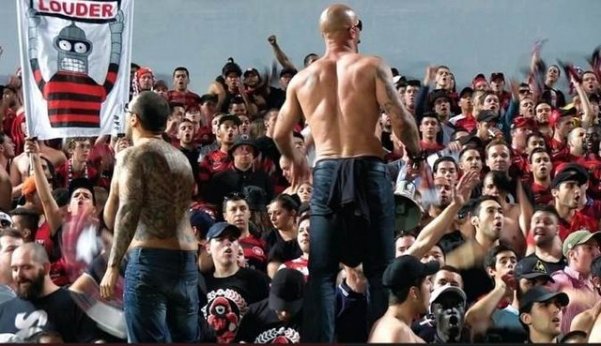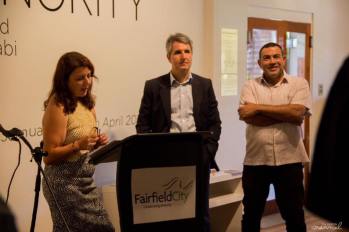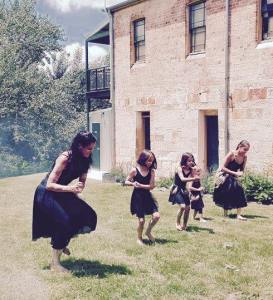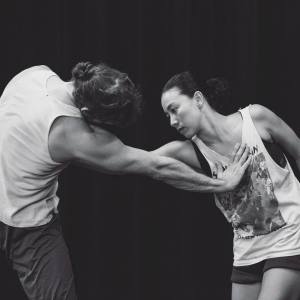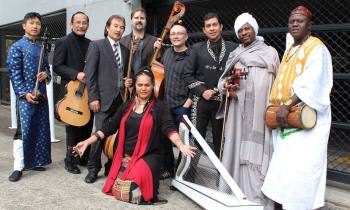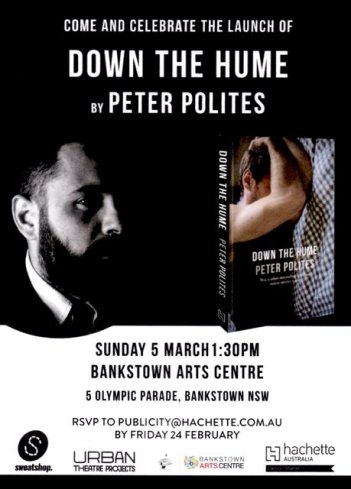 “All these rivers we must cross. Together we will get to the other side. . . . We’ll be forced to grow.” This is the theme of River, a haunting new video by the Sydney World Music Chamber Orchestra. It is an inspiring sound and visual experience of the Australia we are becoming, all woven together by the movement and grace of Gambirra Illume, Yolngu performer and cultural educator from Australia’s north east Arnhem Land. River is a song of sadness and despair uplifted by the hope and optimism that emerges from sharing the journey towards resolution. Look at the warmth and laughter of the participants as they near the end of their street performance. Watch the video River. It is now available from all digital retailers.
“All these rivers we must cross. Together we will get to the other side. . . . We’ll be forced to grow.” This is the theme of River, a haunting new video by the Sydney World Music Chamber Orchestra. It is an inspiring sound and visual experience of the Australia we are becoming, all woven together by the movement and grace of Gambirra Illume, Yolngu performer and cultural educator from Australia’s north east Arnhem Land. River is a song of sadness and despair uplifted by the hope and optimism that emerges from sharing the journey towards resolution. Look at the warmth and laughter of the participants as they near the end of their street performance. Watch the video River. It is now available from all digital retailers.
In January this year, the Sydney Morning Herald reported that at least half of Australia’s special intake of 12,000 Syrian and Iraqi refugees would be settled in Fairfield in western Sydney, within 12 months. In the previous year, Fairfield City Council had already welcomed 3000 humanitarian arrivals from the two war-torn countries. It was the continuation of a pattern of accepting migrants and refugees displaced by war and economic upheaval, which had grown since World War I. This concentration of cultural diversity gave Fairfield a special relevance as the setting for River, Sydney World Music Chamber Orchestra‘s first single released last month. The photo below records the warmth and excitement that surrounded the orchestra following their inaugural concert at Riverside Theatres, Parramatta, in November 2014, when they performed the remarkable three stages of love and death. The words and music of River are developed from an extract of this work. Please take the time to click on all the links and listen to the music recorded.
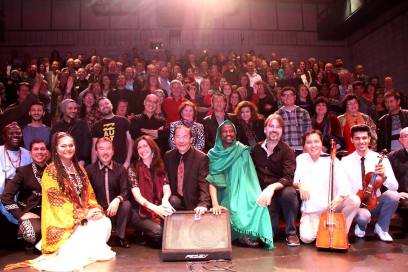 It would be true to say that years of preparation have gone into the launch of River. Some of the first threads were drawn together long before Richard Petkovic created the Cultural Arts Collective in 2007 with Maria Mitar. Even so, they say it took three years of working with fellow musicians to create, record and release River. Through Cultural Arts Collective they showcase the future of Australian music by combining Australia’s many cultures into music that “touches the spirit”. It is a generous vision that has driven Richard for a very long time – unearthing the musical talents and mastery that have remained unrecognised outside the bounds of individual cultural communities and gathering them into making music that draws on tradition to create inspirational contemporary work – anything from driving rock rhythms to hypnotic spiritual chants.
It would be true to say that years of preparation have gone into the launch of River. Some of the first threads were drawn together long before Richard Petkovic created the Cultural Arts Collective in 2007 with Maria Mitar. Even so, they say it took three years of working with fellow musicians to create, record and release River. Through Cultural Arts Collective they showcase the future of Australian music by combining Australia’s many cultures into music that “touches the spirit”. It is a generous vision that has driven Richard for a very long time – unearthing the musical talents and mastery that have remained unrecognised outside the bounds of individual cultural communities and gathering them into making music that draws on tradition to create inspirational contemporary work – anything from driving rock rhythms to hypnotic spiritual chants.
Through Cultural Arts Collective, Richard launched the first Sydney Sacred Music Festival in 2011 after working with migrant and refugee communities in western Sydney for more than 10 years. After operating on a shoestring, it is now an established non-profit organisation, with a measure of government and private financial support. The program extends right across metropolitan Sydney, linking together a whole range of music organisations.
Death and personal loss were the immediate inspiration behind the creation of River. It offers a message of hope for those struggling with grief and profound loss. Eleven musicians performed in the streets of Fairfield, where they were filmed with the willing support of locals. They were world renowned Uyghur bard Shohrat Tursun – vocals, dutar (two string lute), Yaw Derkyi – African percussion and vocals, Richard Petkovic – guitar and vocals, Maria Mitar and Gambirra Illume – vocals, Nicholas Ng – urhu (Chinese two stringed fiddle), Bukhu Ganburged – Mongolian horse fiddle, Salar Hs – violin, Rudi Upright Valdez – double bass, Victor Valdes – Mexican harp, and Ngoc-Tuan Hoang – guitar.
 Many of these artists have been playing together for several years now and it shows in their ease of improvisation and collaboration and their quiet mutual respect. Cultural Arts Collective produces and composes music, and creates ensembles to support artists previously hidden from the mainstream. Already firmly established is the Shohrat Tursun Trio, comprising Shohrat himself, in right of photo, Yaw Derkyi, centre, and Richard Petkovic. CAC manages artists, produces festivals and events and distributes new music.
Many of these artists have been playing together for several years now and it shows in their ease of improvisation and collaboration and their quiet mutual respect. Cultural Arts Collective produces and composes music, and creates ensembles to support artists previously hidden from the mainstream. Already firmly established is the Shohrat Tursun Trio, comprising Shohrat himself, in right of photo, Yaw Derkyi, centre, and Richard Petkovic. CAC manages artists, produces festivals and events and distributes new music.
Richard’s perseverance in changing the focus of Australian music making and performance has led to contracts with Musica Viva to re-imagine their regional touring program and Sydney Harbour Foreshore Authority to work with several community festivals to improve their artistic direction. They are great steps forward on a deeply enriching path.

